Functionally, the SG-41 machine resembled the machines of the Hagelin company in Switzerland and rumours abounded that they were allegedly more complex in nature in an attempt to increase security. This claim for additional security was never proven. Even today, it has not been verified even though two working examples of SG-41 still exist.Klaus Kopacz offers some additional information about the SG-41.Once the machine was ready for production, Hitler's cryptography experts wanted to replace the Enigma in mass, but by that time there were tens of thousands of Enigmas in service. Even though this initiative proved unsuccessful, it did demonstrate that the German crypto community did not trust the security of the Enigma any longer.
In mid-1944, the German Supreme command ordered a procurement of 11,000 SG-41 machines for the Armed Forces and a further 2,000 machines for the Weather Service. This Weather Service version only coded the numbers from 0 to 9. Despite these large orders, only about 5001 copies of the 26 letter SG-41 equipment were delivered, mainly due to the production problems experienced in during the last two years of the war. Production of the Hitler Mills ceased as the Soviet army started to march across Germany. A variant, which was to use a motor instead of a hand crank, never saw production.
After end of WWII, a Hitler Mill was found in Norway and the last printed message was still on it. It read:
THE LEADER IS DEAD. THE STRUGGLE CONTINUES. DOENITZ. "
"While speaking with a former employee of Crypto AG, he told me that Boris Hagelin was very upset when he first heard of the SG-41. Many good details from the BC-38 (an early version of the BC-543) were incorporated into the German design. His firm had no patents in Germany at the time therefore he could not intervene. As a result, whenever Hagelin referred to the SG-41, he called it the "C-41" like his own 'C' series of machines. Hagelin's incorrect reference to the SG-41 has caused some confusion for crypto historians.Indeed some good details of the BC-38 were copied, but the SG-41 was a new design with many advantages. For example, it had a highly irregular pin wheel driven rotor movement.Wheel number 6 controlled the pattern of encryption for the other wheels. To do this, the the bar basket was modified so it could operate in one of three states.
Today, the SG-41 and SG-41Z are very rare items. I only know of two machines in working condition. The SG-41 was offered for 150,000 EUR and the SG-41Z for 120,000 EUR".
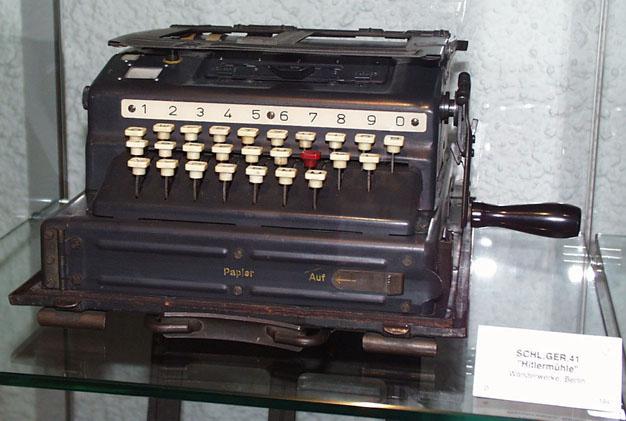 |
| This is the SG-41 example in the Crypto AG Museum in Zug, Switzerland. The placard says it was built in Berlin but that's incorrect. It was made in Chemnitz. (Photo byKlaus Kopacz) |
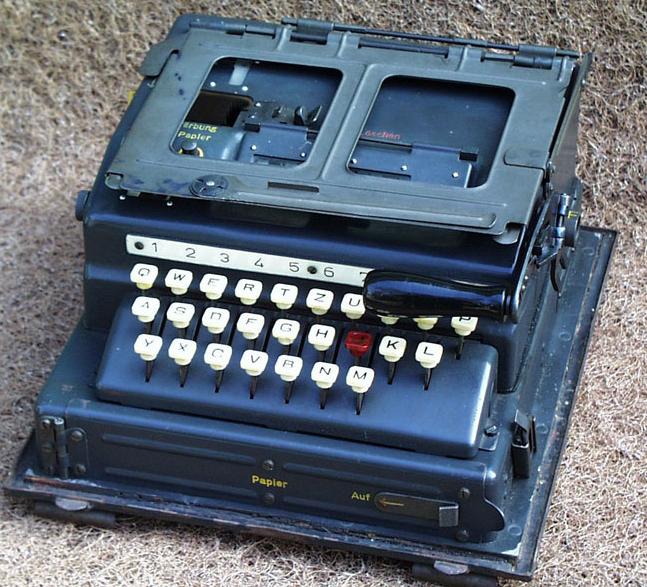 |
| With crank handle and paper support in stowed position. The machine was intended to have been a standard, tactical, lightweight cipher machine, but the Germans only had limited supplies of lightweight metals such as magnesium and aluminum. As a result it was made with heavier metals and was simply too heavy for tactical use. (Photo by Klaus Kopacz) |
 |
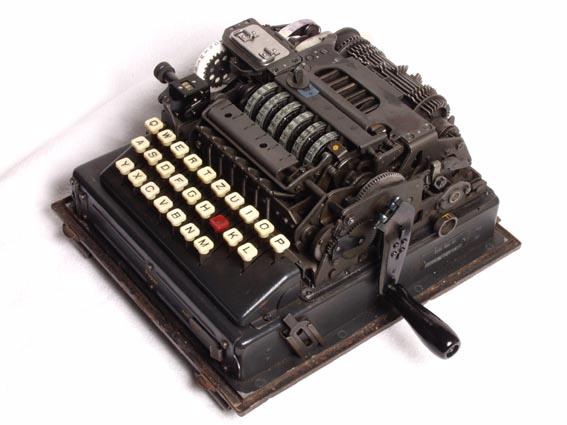 |
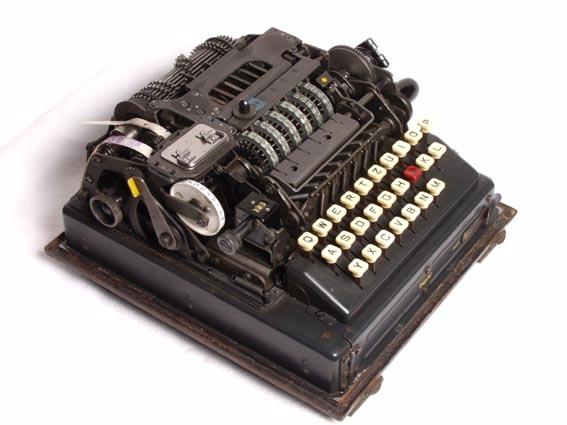 |
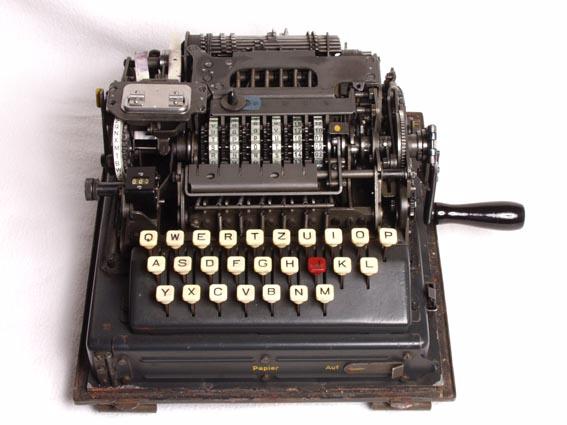 |
| Rotating views of the Schluesselgeraet 41. This example was equipped with a copied ink roller unit. (All photos in this set by Klaus Kopacz) |
Footnotes:
1. The Wikipedia page quotes that 1,000 sets were in use by the Abwehr, the German intelligence service, which operated them from 1944 onwards. (http://en.wikipedia.org/wiki/M-209). There seems to be a discrepancy between sources.
Credits and References:
1) Klaus Schmeh http://www.heise.de/tp/r4/artikel/17/17995/1.html
2) Wikipedia M209 reference http://en.wikipedia.org/wiki/M-209
3) Klaus Kopacz <ibk_mail(at)gmx.de>
4) David Hamer <dhhamer(at)comcast.net>